POLAR RESEARCH
After a landmark season, SA Agulhas II returns to the Mother City
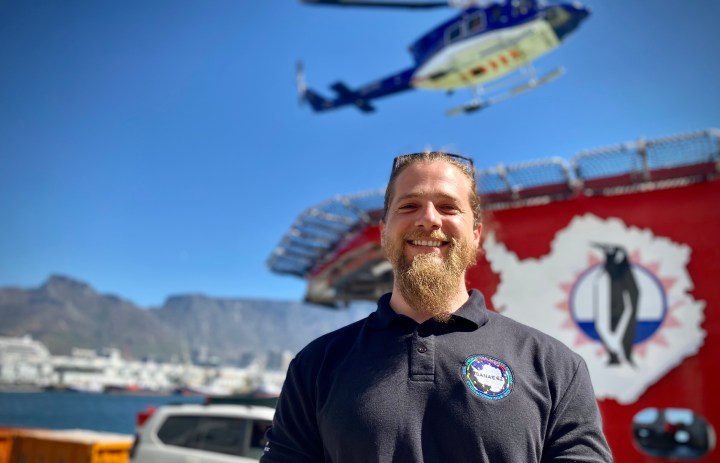
The SA Agulhas II arrived back from Antarctica to clear skies and a jubilant crowd on Tuesday. For the first time in some 65 years of official polar exploration, South Africa also called at both its East Antarctic and Marion Island stations in one voyage.
Although the arrival of the SA Agulhas II, South Africa’s R1-billion polar research vessel, was delayed by harbour fog on Tuesday morning, she finally nosed into her iconic berth near the Table Bay Hotel just after 2pm.
The quayside crowd had been waiting next to the South African National Antarctic Programme offices for several hours, while the country’s flagship Antarctic vessel passed through customs.
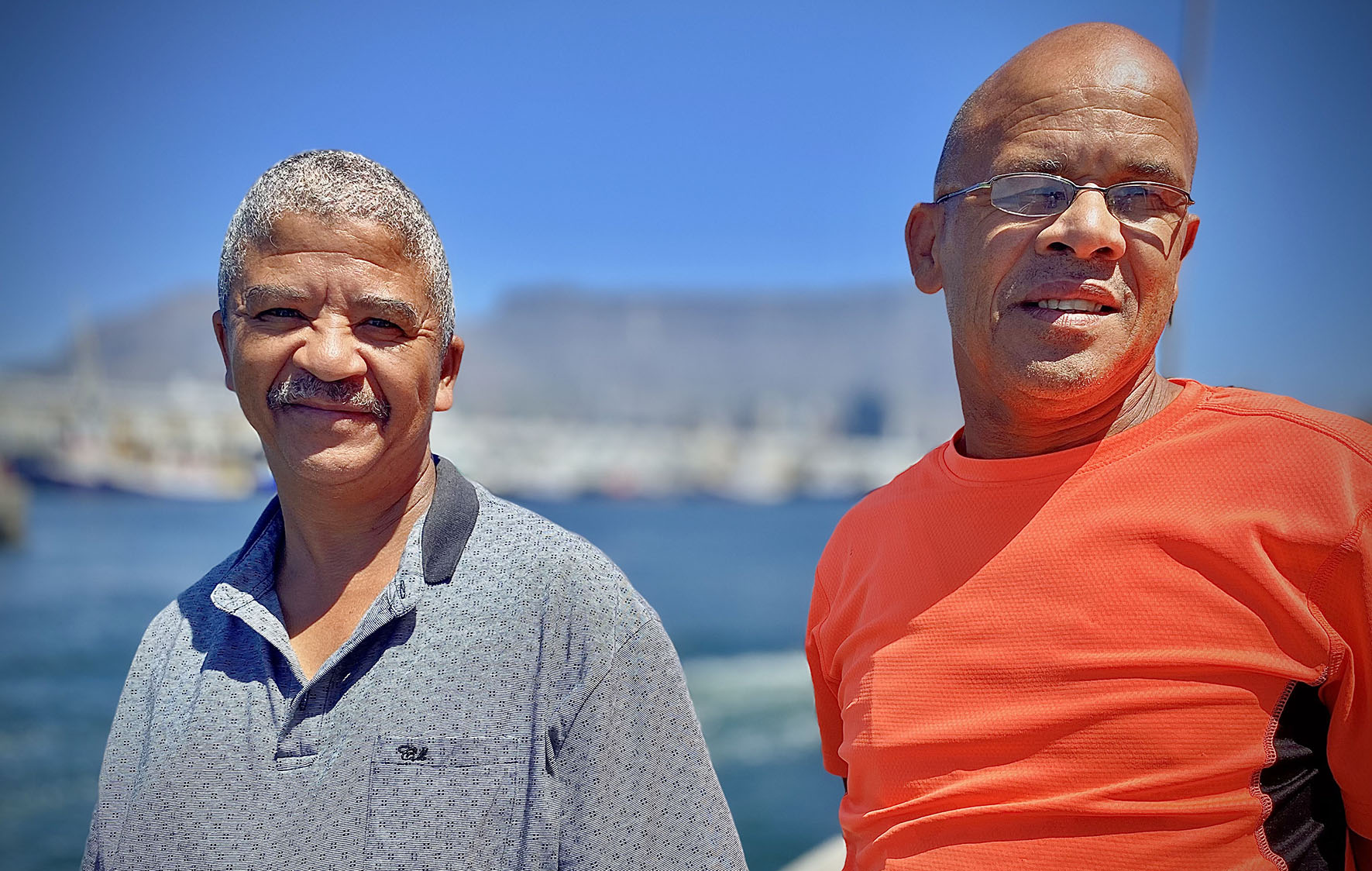
From left: Michael Jaftha and Jerry Eksteen await the arrival of friends onboard the SA Agulhas II. (Photo: Tiara Walters)
When she finally hove into view from the customs dock, Table Mountain and the Mother City’s azure skies unfurled their party streamers to celebrate this grand dame of Antarctic science. Colleagues, friends and family on the East Pier erupted in ululations.
The ship’s usual arrival anthem, Welcome to Cape Town, reverberated across Table Bay from the quay speakers — an apt musical recognition as the ship is devoted to the spirit of the late South African singer Miriam Makeba.
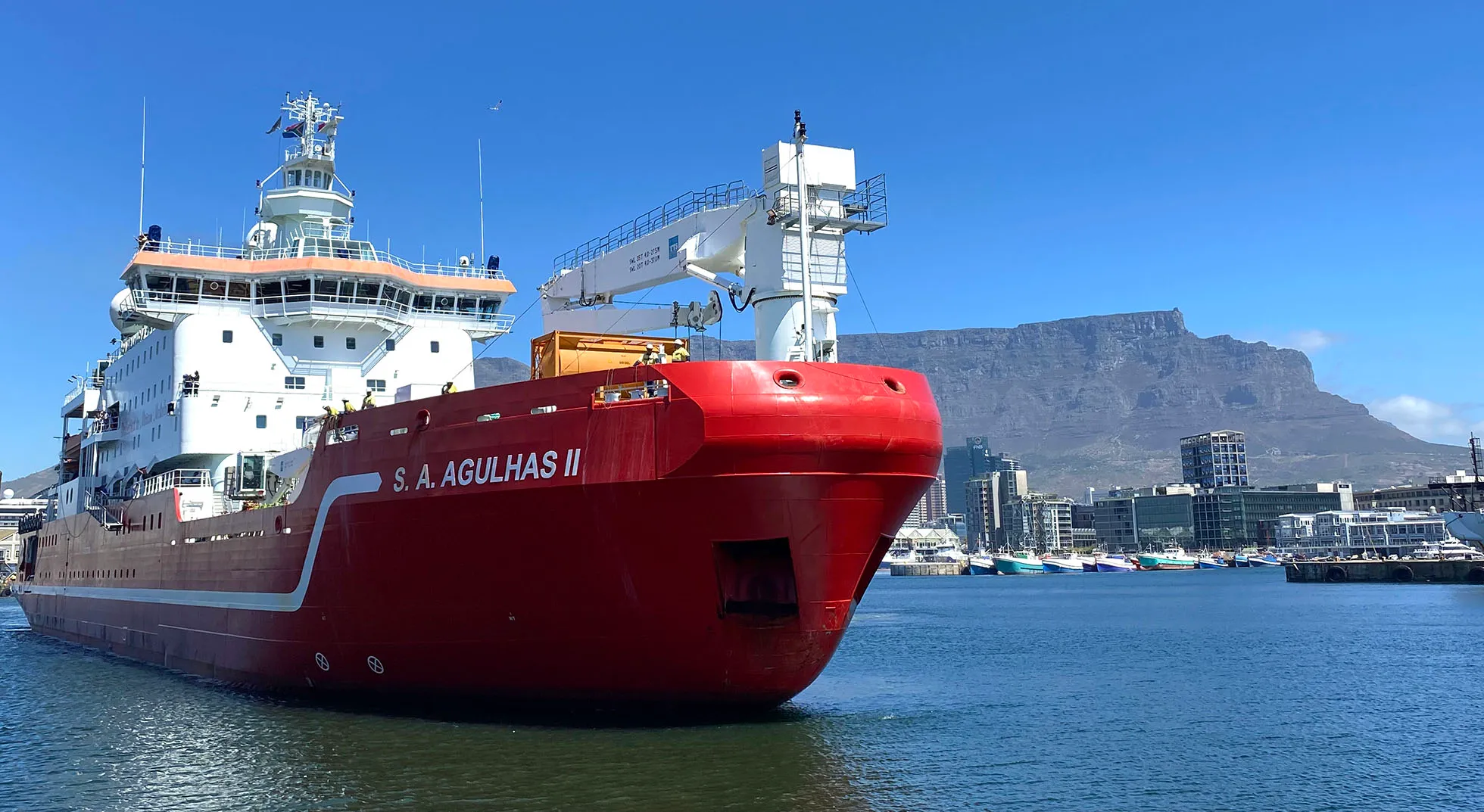
The South African-flagged SA Agulhas II, the only national polar research vessel in Africa, arrives back from East Antarctica on 20 February after her annual summer relief voyage. (Photo: Tiara Walters)
Dr Lisolomzi Fikizolo, head of the South African government’s oceans and coasts division, noted in a speech next to the docked vessel that this had been an exceptional voyage.
“It was the first time in one season that we had to plan for two destinations — the Antarctic continent and Marion Island — both to be covered during the southbound and northbound legs of the voyage,” Fikizolo said.
The polar crews had left the Mother City for both the sub-Antarctic and Antarctic regions on 10 November. They were also tasked with removing former station infrastructure at Marion Island, a South African sub-Antarctic territory in the Southern Ocean, as well as yearly maintenance at South Africa’s Sanae IV research base in East Antarctica.
The ocean voyage, as usual, pitched and rolled through the infamous Roaring Forties and Furious Fifties, but several research projects were conducted onboard.
“With regards to the oceanographic research, I can safely say the ship-based science during this cruise was both successful and a reason for all of us to be proud of our scientists,” Fikizolo said.
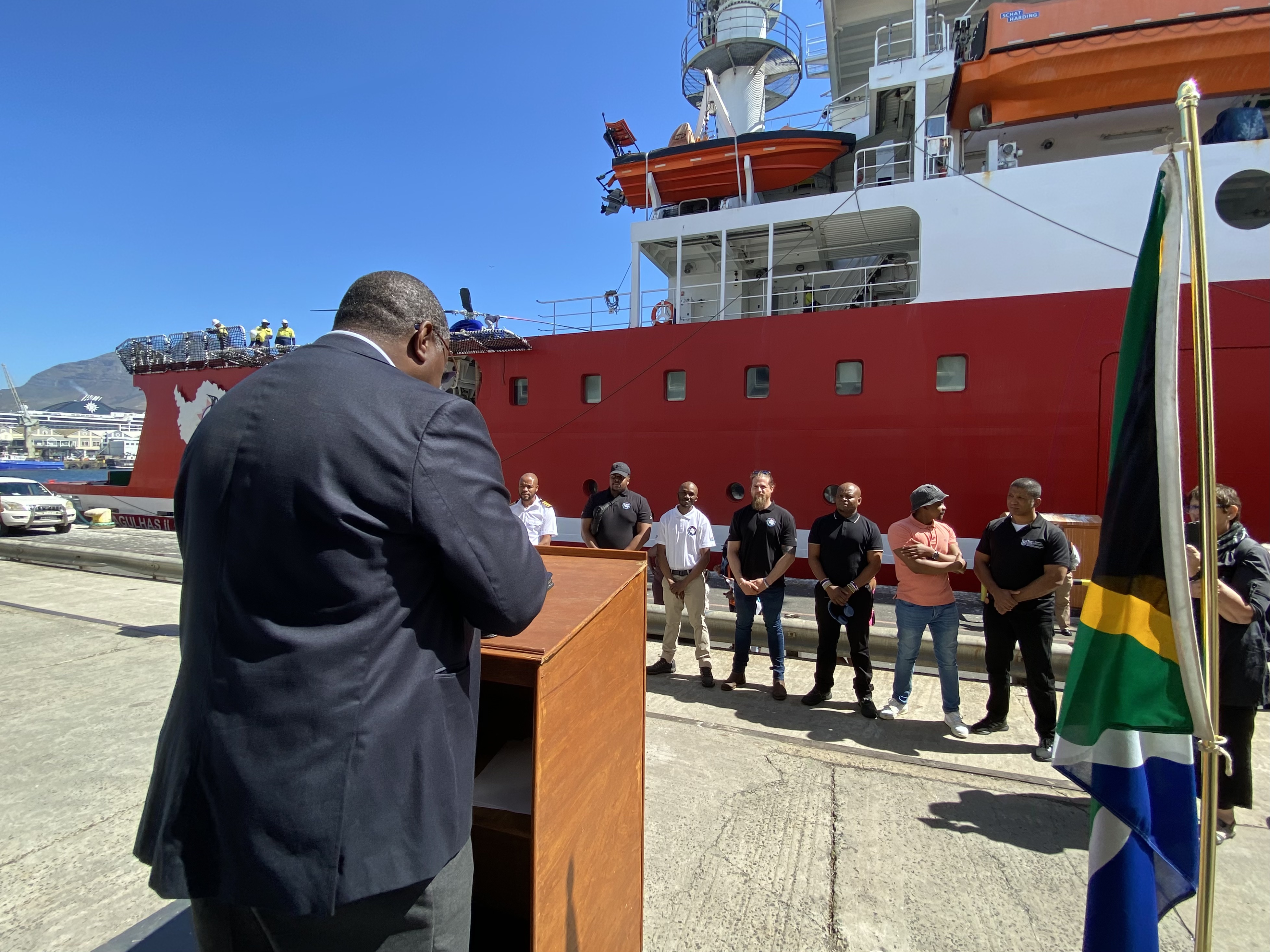
Dr Lisolomzi Fikizolo, faced by South Africa’s newly arrived Antarctic overwintering team, delivers a welcoming speech outside the South African National Antarctic Programme office block. (Photo: Tiara Walters)
All at sea: probing motion sickness
Research teams from the Department of Forestry, Fisheries and the Environment, the University of Cape Town (UCT) and the Council for Scientific and Industrial Research (CSIR) “assembled seawater and conducted specific atmospheric tests”.
The samples were collected “to better understand the Southern Ocean’s role in drawing carbon dioxide out of the atmosphere”, he said.
The University of Stellenbosch, with UCT and Finland’s Aalto University, investigated the ship’s ice-breaking capabilities and probed the properties of ice.
This ship’s voyagers are as likely to find Ouma rusks in the galley as they are to be confined to their bunks during the treacherous, weeks-long voyage down south. So, the Stellenbosch team also capitalised on these conditions to study the secret life of motion sickness.
The South African Weather Service carried out meteorological observations by releasing balloons, “thus providing invaluable data for weather forecasting”, Fikizolo said.
Yet, due to exceptionally poor weather, the CSIR was unable to deploy its sea gliders as part of a frontier-breaking project to understand CO2 “storm outgassing” driven by climate change.
A second life for SuperDARN science
At South Africa’s research base, constructed some 180km inland on a mountain layered by kilometres of snow, the South African National Space Agency (Sansa) did a “major” upgrade of the “SuperDARN” digital instrument.
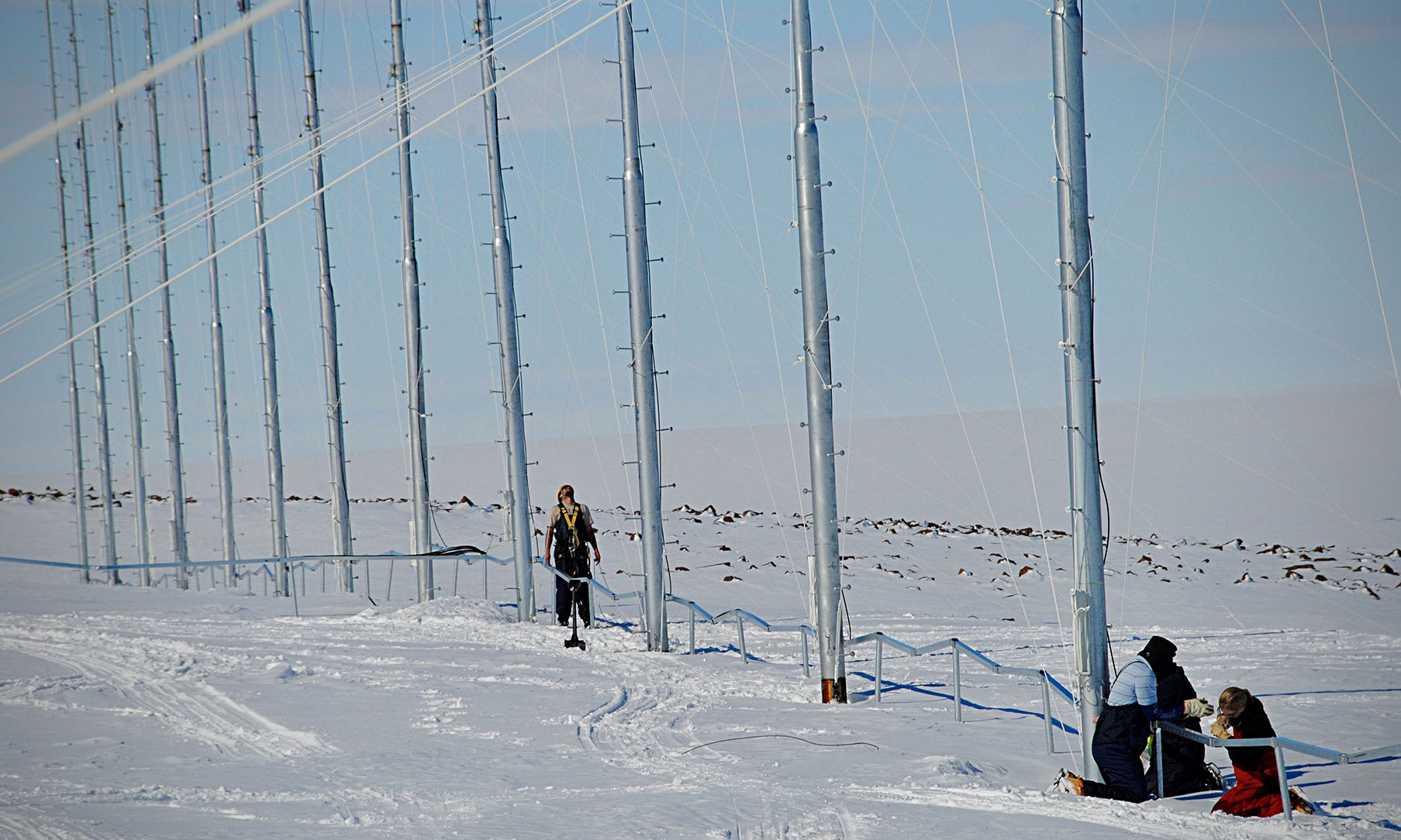
South African researchers maintain the SuperDARN radar during the annual relief voyage of 2009/2010. (Photo: Tiara Walters)
Otherwise known as the Super Dual Auroral Radar Network, this is one of more than 30 high-frequency radars stationed across the world to monitor space storms that can tank satellites and power grids. One pair of radars, Sansa notes, can measure weather across 4 million square kilometres of space.
The upgrade included the “successful commissioning of the secondary array known as the interferometer. For the first time in 10 years, the interferometer will be running, adding valuable data to the new SuperDARN radar,” Fikizolo said. “This makes the SuperDARN one of only a few in Antarctica to have this additional array.”
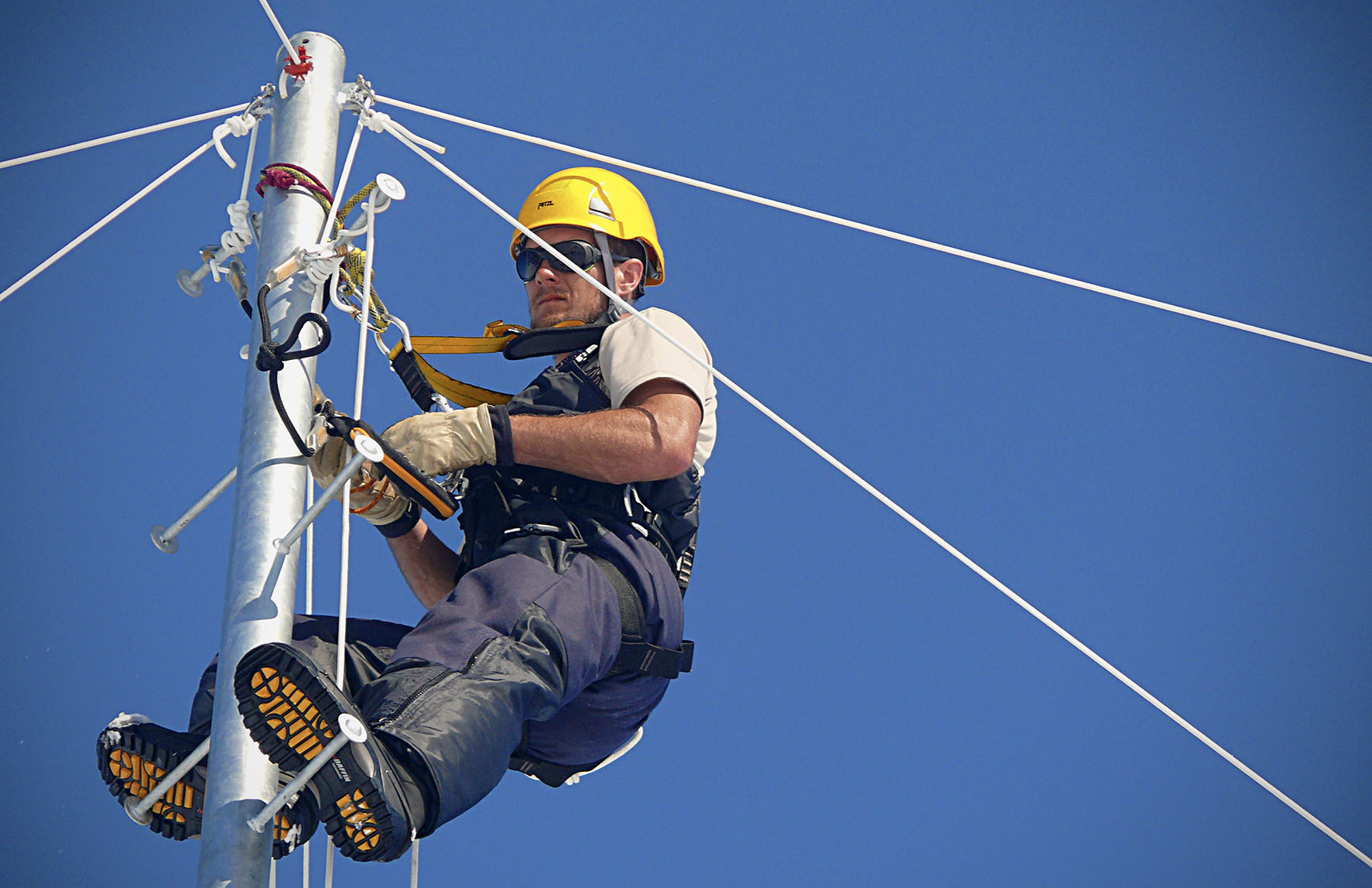
Overwintering radar engineer Roger van Schie atop the instrument in January 2010. The radar is perched on an Antarctic mountain peak largely covered in snow. (Photo: Tiara Walters)
The South African Weather Service, Northwest University and the Commission for the Nuclear-Test-Ban Treaty Organization also led inland work during the recent cycle.
South Africa is one of 12 founding signatories to the 1959 Antarctic Treaty, which bans nuclear tests in the wilderness below 60°S. It is the only African country with decision-making powers to the agreement.
This commits the country to conduct “substantial”, year-round research in the greenhouse gas-hit region, which is dedicated to peaceful activities such as tourism and scientific investigation.
The SA Agulhas II is also chartered by international organisations, including the Endurance22 expedition that located the wreck of Sir Ernest Shackleton’s iconic schooner barque in the Weddell Sea.
She is Africa’s only national polar research vessel.
‘We chased auroras as far as we could’
The annual summer relief voyage lasts just over three months, exchanging a wintering staff complement of about 10 members to maintain the remote caterpillar station and collect research data. This year, as during several years over the past decade or so, veteran station doctor Dr Abigail Paton has stayed behind to spend yet another year on the ice.
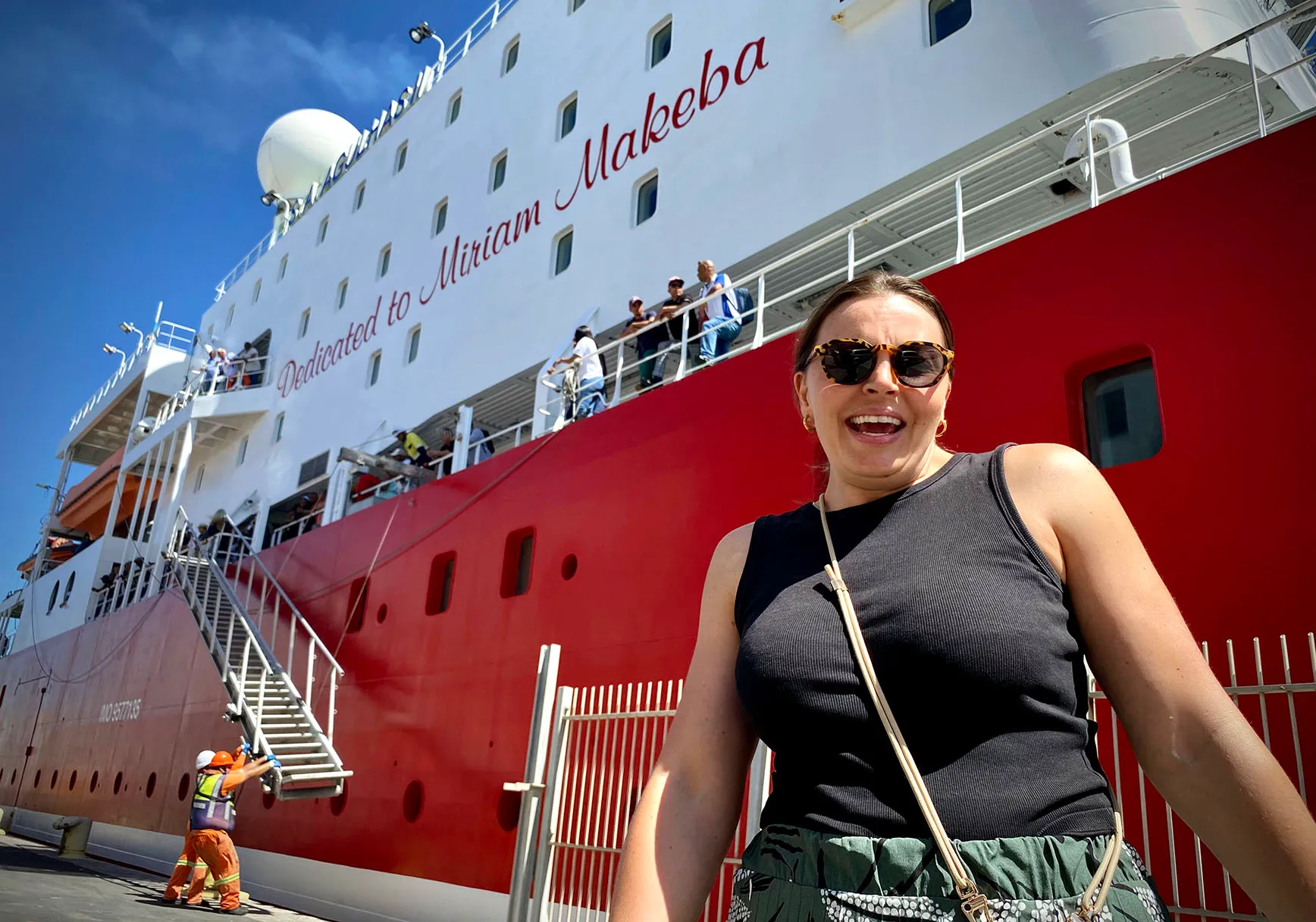
Anche Louw, society manager of the South African Polar Research Infrastructure, joined the SA Agulhas II’s welcoming party. (Photo: Tiara Walters)
This year’s overwintering team leader DJ van Wyk said the Tuesday reception was “a little overwhelming” after largely spending some 12 months in one of Earth’s wildest, remotest corners with just eight other team members.
A Cape Town-based Sansa senior electronic engineer, 32-year-old Van Wyk said the intrepid crew “from diverse backgrounds” was blessed with preposterous auroral displays during their stay.
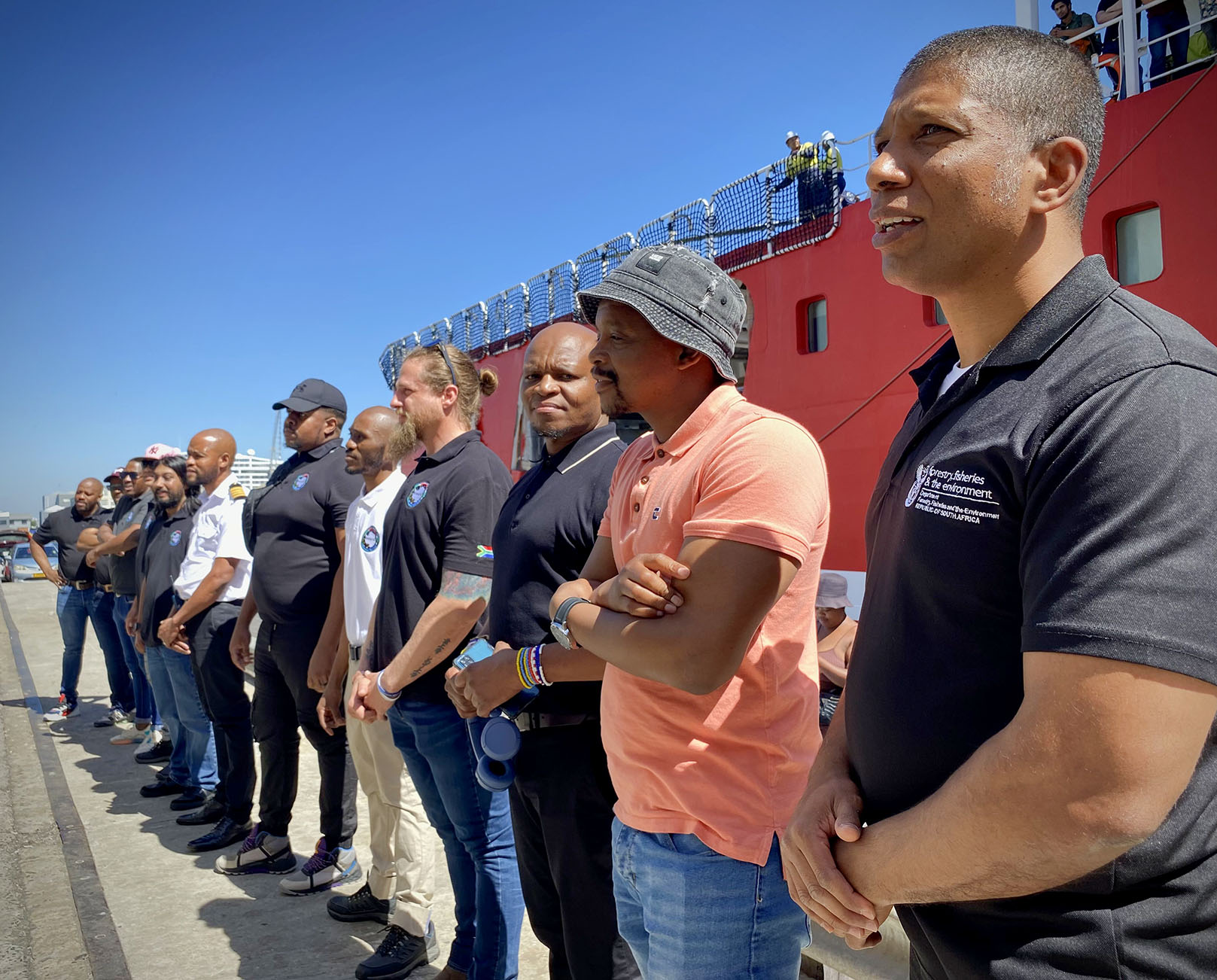
Just arrived, South Africa’s expedition leaders and overwintering team line up next to the SA Agulhas II for a traditional welcoming ceremony. (Photo: Tiara Walters)
“The two months of complete winter darkness were absolutely amazing, especially the auroras. We were quite fortunate to witness an aurora almost every second day,” said Van Wyk, who pointed out the team also had to shovel snow into a smelter for all their water needs in skin-searing, sub-zero temperatures.
“We chased auroras as far as we could, we stayed up until 4am just to see something in the sky,” he added. “Seeing an aurora in person is completely different to even the most perfect photo. It is a spiritual experience I will never forget.” DM



















 Become an Insider
Become an Insider
Comments - Please login in order to comment.